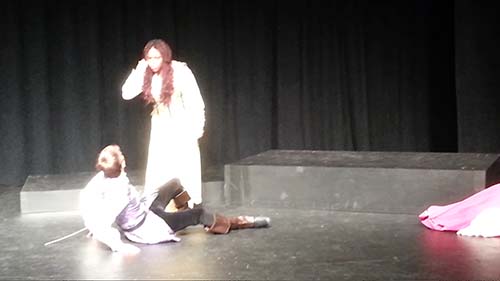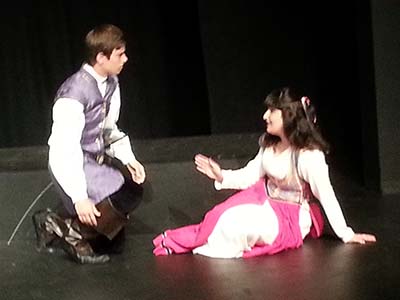Fall Risk Assessment and Intervention with Rheumatoid Arthritis

First major study in Rheumatoid Arthritis to explore risk factors of falling
 In a recent study “Risk factors for falls in Adults with Rheumatoid arthritis,” 525 people diagnosed with Rheumatoid Arthritis (RA) were followed for one year to examine risk factors for falling. Thirty-six percent of patients in the study fell at least once during the year. Neither age nor gender increased fall risk.
In a recent study “Risk factors for falls in Adults with Rheumatoid arthritis,” 525 people diagnosed with Rheumatoid Arthritis (RA) were followed for one year to examine risk factors for falling. Thirty-six percent of patients in the study fell at least once during the year. Neither age nor gender increased fall risk.
The authors determined that the data show “falls in adults with RA are not just random events but may be predicted and possibly prevented by assessing and treating a number of independent risk factors.”
Factors that increased fall risk in people with Rheumatoid disease
 Tender or swollen lower limb joints doubled fall in risk. Other factors that increased the likelihood of falling included higher HAQ score, previous falls, greater fear of falling, taking four or more medicines or psychotropic medicines, and higher pain and fatigue levels. People who felt “dizzy or unsteady” also had an 80% increased risk of falling.
Tender or swollen lower limb joints doubled fall in risk. Other factors that increased the likelihood of falling included higher HAQ score, previous falls, greater fear of falling, taking four or more medicines or psychotropic medicines, and higher pain and fatigue levels. People who felt “dizzy or unsteady” also had an 80% increased risk of falling.
The investigators concluded: “Adults with RA are at high risk of falls. In clinical practice high risk falls patients with RA can be identified by asking whether patients have fallen in the past year. Important risk factors highlighted in this study included: swollen and tender lower limb joints; fatigue and use of psychotropic medicines.”
Interventions to reduce fall risk with Rheumatoid disease
Recommendations for lowering fall risks included, reducing psychotropic medications, assessing joints in feet and legs, increasing strength in feet and legs. Risk of fall should be assessed since Rheumatoid disease activity increases risk, regardless of age. Assessing fall risk should include inquiries about previous falls.
Have you fallen? What were the factors? Did you fit the patterns in this study?
Click here to download the new RPF white paper reporting your survey responses.




If anyone bothered to take into account what patients say, the medical community would have known this ages ago. I mentioned to my rheumy’s nurse months ago that my ankle felt very unstable. She assured me it had nothing to do with RA. Long story short, I fell last week and broke the fifth metatarsal in my left foot. The ankle rolled and down I went. Xray revealed degeneration in the ankle in addition to the fracture. Am I afraid of falling? Do you suppose a study was required to tell someone this?
The comment about strengthening lower extremities sounds great, wish I could. Even with my pain meds, am unable to walk much more than 100feet on level ground before the pain in my feet, knees and back becomes too severe. Stairs are always brutal. My next attempt is going to be water arobics. I will keep trying because I hate having to use a cane at times.
Hope this study will
The RA damage in my feet makes walking or standing difficult, so that limits types of exercise for me. But I do chair exercises to strengthen my quads — you can google that for examples.
For a while I took an arthritis pool class and exercised in a pool. It toned up my muscles. You can do simple exercises and there are so many exercise gadgets to use in a pool — there’s a flotation belt u can wear that keeps you vertical in the water to do a cross-country skiing type motion — the faster u do it, more of a cardio workout you get. Very easy on the joints.
I agree with Pat completely. My kids used to have those old toys with a giraffe on elastic string and you push a button on the bottom and the animal collapses (remember those?), they joked how it reminded them of me. Broke a toe once, broke my wrist another time. Sometimes falling just from standing, not even walking. Nothing like a few broken bones to make you afraid of falling again. Since moving to Florida, we have a pool in our community and one of the ladies in our neighborhood (Carmen, an angel sent from heaven) starting having a free water fitness class last year. It has helped so much, I feel like I can do anything while I am in that pool, and since doing the water fitness I find I don’t fall nearly as much as I did before.
Hi Pat!
I too feel very unstable on my feet. I find I walk like Frankenstein, unable to flex my ankles as I take steps. Using a cane when venturing out of the house is now a necessity. Sending best wishes for a quick recovery 🙂
Lois
For me, sometimes I’m so stiff in the morning my feet and legs just won’t move the way I want them. Neuropathy doesn’t help (Though that is easing up with methotrexate, thankfully!) – pins and needles feeling in feet are distracting when you’re trying to get the kid off to school in the morning. And I’ve always been clumsy. So fall I go.
A doctor (not a rheumatologist) has told me that RA will likely be cured in my lifetime (I’m in my 20’s). I actually buy this. I told my husband about the idea of a cure in my lifetime, and added my snarky “And then it will take around twenty years after the fact for rheumatologists to prescribe it.” He laughed. We’ve gotten cynical, which is unfortunate since I’m about a year in pain-wise.
I know there are good rheumatologists out there and they have my love. Hopefully they’ll be more and more influential in this business, so we can improve some lives and all that. It’s irksome that studies on the obvious need to be done, but I’ll take it if it brings more doctors to rheumatology, helps some of the insurance problems, etc. Oy.
I had a Triple Arthrodesis in 1999 and also had a repair of it in 2005. Triple Arthrodesis is the fusing of the foot joints below the ankle. I have had 9 screws placed in the joint plus several fusing’s. This procedure prohibits the foot from moving at certain angles and therefore will make your body collapse if you hit one of those angles without anticipating it. Before I had my first procedure I was unable to walk on my foot at all, I became a prime candidate for the Tri Arthrodesis which is called a “salvage procedure” and is not recommended unless all other avenues of treatment have been exhausted.
One of my falls was when I passed out and I broke one of the fused sites. Also my original Tri Arthrodesis was done without taking into consideration my gait and therefore I’ve had trouble with it since the first surgery. It is still an active location for pain and inflammation. My Orthopedic Surgeon suggested breaking all fused area’s, removing all the screws and starting over. which also means being non-weight bearing for 90 days post surgery, and another 90 days of wearing a boot with progressive use of the foot. Having RD this means transferring all weight onto other area’s of the body such as with using crutches, which will affect your wrists, elbows and shoulders along with the other hip, foot, ankle and knee. To be honest,I won’t have it reconstructed, this surgery is debilitating and problematic from the beginning.
Post rehab and surgery I have had many falls. My foot isn’t able to lift as well as a normal foot so if there is a surface deviation of even 1/8 of an inch and my shoe hits it, I fall fast and hard. This can happen walking on a sidewalk, an asphalt surface, into a restaurant or even a surface that is free of deviations but is at a slight incline. Since I’ve been dealing with this for over 10 years I have a husband who is very aware of my issue and stands near to help.
I have learned how to fall by rolling out of the fall, so I don’t hit one particular bone, but in doing this I have injured my shoulder and am now in need of shoulder surgery due to so many falls and RD taking advantage of a weak joint.
Kelly once again you are spot on with your review of one of my painful symptoms of RD that people like to laugh at me and say “Jan you are so clumsy.” I always knew it was due to RD but when you try to explain to the general public, they don’t comprehend or care.
Interesting… I had a fall last fall (haha), then walked around on a badly sprained knee + a fractured ankle bone (tiny, hidden thing that only a specialist noticed on the MRI) for about a month. Part of both my and my doctors’ reluctance to move on to aggressive diagnostics (MRI, after x-ray showed nothing obvious) & treatment was that it was difficult to distinguish the new pain from “normal” RA flare symptoms.
The cause was my own clumsiness. I was rushing to my car and stumbled over an uneven spot in a parking lot, then twisted my body trying to land on the padding instead of an outstretched arm (my sister, daughter, and father have all broken arms doing that). I’ve never been particularly graceful, but I wonder if I would have been more nimble without the RA, more alert without some of the medications I take, without the interrupted sleep & general brain fog that comes with pain & inflammation.
I have to wear shoes with broad, slightly lugged soles so I feel more in contact with the ground, otherwise it’s too easy for me to stumble, trip, or lose my balance (I’m clumsy ANYWAY).
My favorite shoes are New Balance, and the ones I have currently have a lug sole. It’s made such a difference in how stable I feel on uneven or soft ground.
I fall maybe twice, three times a week. Not always badly; usually I manage to catch myself or fall onto something like the bed or the couch. My neurologist makes me keep a record of my falls since she was concerned that I might have more going on than the RA. Nothing ever came of all that testing, but my number of falls per month boggled her mind. So now my regular doctor is keeping track, too (I got a concussion last year because I hit my head on the very solid bunk beds when my knee went out).
I have fallen a number of times. I am 55 and have had RA since I was 13. My right ankle rolls all the time, even when wearing a brace. I live in Vermont and have slipped on ice. I recently fell and landed on my shoulder which has a large area of erosion. The fall triggered an inflammatory reaction that caused my white blood count in the synovial fluid in that shoulder to be 93,000. I had to have the shoulder surgically debrided and stay in the hospital for 7 days taking iv antibiotics, running cultures to make sure it was not septic. So, yes, I am now afraid of falling again. I usually walk with a cane, but my injured shoulder will not work with that, so I feel even less sure of my footing.
Oh boy. A fall is sort of what started me on this journey. I have a combo of signs of reactionary RA, some signs that it may have been in the background 15+ years (lung issues, anemia) and a little bit of a suspicion of psoriatic activity.
Anyway I hurt my back last summer. Badly. I pulled on the wrong postop patients the wrong way one too many times. Two bad nights, then I went home, went to sit on the couch and ate the carpet. Hm. The hand pain started in earnest after the workup, the prednisone, and the severe cold that followed this episode. It hasn’t left yet… it may not ever leave.
Anyhow during the prednisone week, after the fall and the orthopedic visit, I did three things that really helped in the long run: one, they said “arthritic” about my SI joint so I did reading up on different arthritis types, two I found this site and bookmarked it just in case, and three I made myself a cane. (My hands worked. It’s pretty.) Now since then I haven’t needed it much, but I won’t hesitate to use it when I do.
Anyhow this week I am finally on a DMARD, hello methotrexate injections. There are days I just know I should have left the house with my cane. The things that make a fall likely are foot pain, fatigue and that SI joint acting up on my right hip. The sciatica is not often present, but the weakness can come and go without the sciatica at times. To help this, before my problems got bad I bought birkenstocks to work in and the soft footbed is the one for me. So I bought two more pair (prettier ones) and when the feet hurt, they put it in the right shape, so to speak, lessen pain a tiny bit and help keep the foot steady. Also I have to slow down and pay attention to my gait. Then if I do use the cane, I have to limit its use. It sounds weird, but overuse for me would make me lean to the weak side more and I don’t want that.
So it’s a two edged sword. The meds that help, could make us less alert and disposed to fall. The devices that help, could be a hindrance at times. (hard to do things with your hands when holding a cane) Thank you Kelly for posting this. I think your site has helped save my sanity and certainly my ability to function.
And I don’t believe “falls” are included on the HAQs. Wonder what would happen if we put together a list of ‘do you experience this’ and then tally them up at the end of each week. I believe we might come up with some better indicators of disease activity and impact of disease.
Yes! I have fallen (let’s say more then once), and fortunately nothing broken…When I had some tests done for c-spine, the Dr told me that the nerve passage was very “tight”. And as it progresses, it can cause you to lose awareness of your steps, change your gait, and be generally unsteady. Kind of “unaware” of where you are stepping, and grazing familiar objects as you walk around them. All I can say is, he is right, as I am starting to experience those exact symptoms. RA and spine damage seem to be common with a lot of rheum mates in the forums. That on top of flares in lower extremities, is definitely a recipe for disaster!
I fall pretty often, but it’s more because of my vestibulopathy than the RA. I’ve learned when I feel myself going to just go limp and fall. If you stiffen up or try to catch yourself, you get hurt.
I agree with the comment that we should come up with better questions for the HAQs. I always feel like these are a joke when I fill them out. For instance for the “I can dress myself” question, I answer “with little or no difficulty.” Of course, this doesn’t take into consideration that I know longer have clothes with buttons or zippers, or shoes with laces, or wear jewelry… I have adapted my wardrobe so that I CAN get dressed without asking for help. The fact that I have changed my wardrobe doesn’t mean I don’t have disease activity…
U will love my upcoming paper on HAQ!
Sent from phone.
I have fallen but so far have caught myself each time so I never fully hit the ground. I don’t have a fear of falling, I still don’t expect to fall as that is was not normal for me. My feet and ankles are a mess; everything is tender to some extent. I’m unsteady on my feet at times, and trip or stumble easily. Generally this is directly proportional to my pain and fatigue levels. This never used to be the case; I could stand and walk all day without tiring.
The evidence you present doesn’t surprise me at all. Arthritis of any kind imposes restrictions on what we can do, basic mobility being the most important thing to lose out generally. When my knees first started to get stiff, I thought my main problem would be the irritation and discomfort. It was only later that I realised how fearful I’d become of going up and down stairs or walking over rough ground. Physically, I was still up to the task but mentally there were reservations, and because of this doubt I kind of tensed up and made the stiffness worse. That’s when I took up Yoga to improve my balance and co-ordination. It took away some of the fear factor and made me realise I’m more mobile than I thought. Did I mention juggling also? Weird how that one helps, but it does. Thanks for sharing this valuable research.